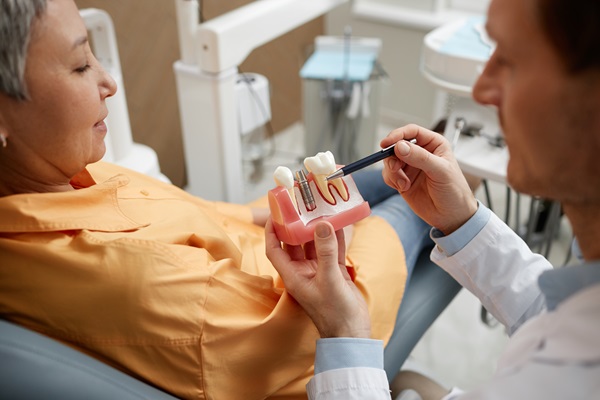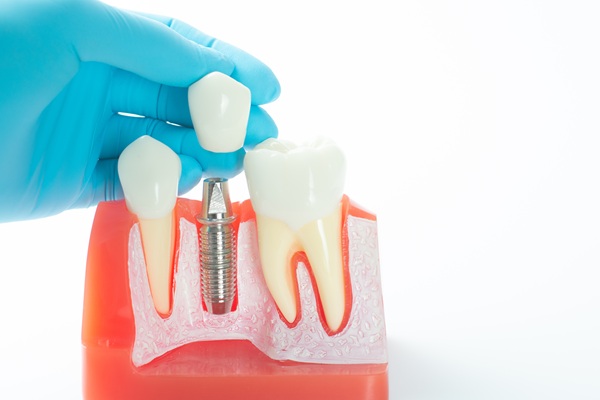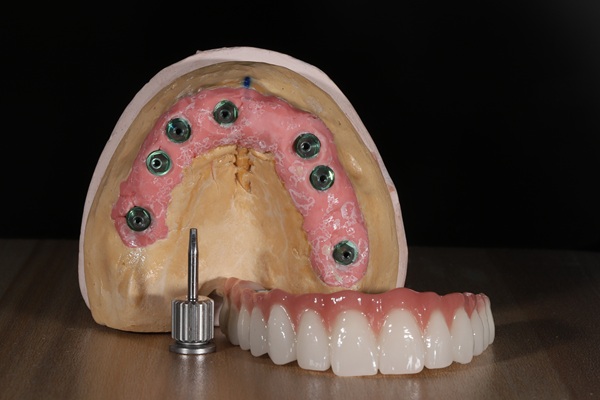A Permanent Solution: Understanding Dental Implants

Dental implants are permanent options for replacing missing teeth and repairing one's smile. Instead of contending with the annoying glue of dentures and the risk of them slipping out while talking, patients can enjoy dental devices that function like natural teeth by opting for dental implants. To determine if these are the right choices for your situation, read on to understand how dental implants work and what to expect.
An overview of the dental implant process
Installing a dental implant cannot be completed in one day. However, the lengthy timeline mainly entails waiting, so the overall process remains simple despite the time that it takes.
Evaluation
Dental implants function by installing a crown, or a tooth-shaped cap, on top of a metal rod that is implanted into the jawbone. Before this process starts, the dentist must evaluate the patient to identify any damaged teeth that need to be removed near where the implant will be. Removal constitutes an entirely separate process with its own healing timeline.
The dentist will also take X-rays to determine the thickness and strength of a person’s jawbone. If the bone is not thick enough for a metal rod to be installed, the patient may need bone grafting before the dental implant process starts.
Grafting
Not all patients will need bone grafting to receive a dental implant. Those who do will undergo minor surgery to move bone tissue from somewhere else, such as the hip, and place it into the bone structure of the jaw to increase its mass.
Then, the transplanted material needs time to heal and bind with the rest of the jawbone. This process can take six months or more, though most patients feel back to normal within a week or two.
Implant placement
Implant placement can begin once the oral cavity and jawbone are properly prepared. First, the dentist will ensure that the patient will not feel pain during the procedure, typically through local anesthesia. Most people are awake for the implant placement.
Then, the dentist will open the gums and expose the bone tissue in the area where the tooth replacement is planned. This gives them access to the jawbone so they can drill a hole where the dental implant will rest.
For the implant post to stay secure in the jawbone, it must be screwed in, either by hand or with a separate tool. The dentist will ensure that the post is angled correctly so the crown will fit seamlessly on top of it into the natural arch of teeth.
Then, the only thing left to do is wait. The implant post needs time for the bone around it to heal, incorporating it permanently into the jawbone in a process called osseointegration. This enables the post to function just like a natural tooth root.
Like with bone grafts, patients should expect to wait six to nine months for the bone to integrate with the post. During this time, they can leave the gap from the missing tooth open if they like, or they can use a temporary solution, such as a dental flipper or a retainer with a false tooth, to hide the area until the permanent restoration is in place.
Preparing the site
Once the implant is successfully integrated into the jawbone, the final step is to attach an abutment and a crown, which mimics a natural tooth. The dentist will expose the top of the metal post in the jaw so they can add the abutment, which functions as a connector.
The crown attaches to this abutment and is fixed firmly in place. Once the crown is installed, it functions like any other tooth and can endure the same chewing pressures as the tooth that it replaced. Patients should take care of it in the same way, brushing and flossing every day to keep it in good condition.
Dental implants for long-term tooth replacement
A dental implant is a solution for tooth loss that permanently binds with the jawbone, offering the stimulation that the jaw needs to stay healthy and strong. While dental implants can be a big time commitment, they are meant to last the rest of a person’s life.
Simply swapping the crown if it becomes worn or damaged is enough to keep an implant in good shape, so for most patients, the wait is worthwhile for a lifetime of functional tooth replacement. Contact our dental office to schedule an appointment and learn if dental implants are a good option for replacing your missing or damaged teeth.
Are you considering dental implants in the Palm Beach Gardens area? Get more information at https://corderoperiodontics.com.
Check out what others are saying about our dental services on Yelp: Dental Implants in Palm Beach Gardens, FL.
Recent Posts
Preparing for dental implant recovery is just as important as getting ready for the dental implants themselves. A good recovery sets the stage for successful implants that can last the rest of your life, with few additional changes or fixes. Here is what to expect after a dental implant procedure so you can adjust your…
It is common for people to be self-conscious about their smile, and many do not realize just how big of an impact that expert implant dentistry can have. Implants provide functional and aesthetic benefits that other restorations cannot achieve. The implant process is more in-depth than options like dentures, so the overall outcome is also…
Dental implants are oral prosthetics that are highly recommended by dentists when it comes to replacing missing teeth. Implants serve as artificial teeth roots that are surgically inserted into your jawbone. It takes over the role of the root that falls out when a tooth comes off, passing bite forces into the jawbone so it…
A periodontist can help with the placement of dental implants. These are dentists who specialize in diagnosing, preventing, and treating issues that affect gum tissues like periodontal disease, which is the second leading reason why people need dental care. A periodontist spends most of their time performing gum disease treatments, bone grafts, and dental implant…


